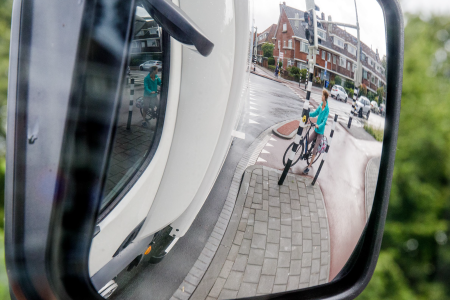SWOV has been commissioned by Shell Global Solutions International B.V. to perform an inventory of systems that monitor blind spots around large vehicles such as trucks and buses; so-called Blind Spot Monitoring Systems (BSMS). However it turned out to be impossible to carry out an assessment of the quality of available BSMS's based on scientifically relevant criteria; too much information about the detection performance and usability of the systems was missing due to the fact that manufacturers do not or hardly share this information (such as the number of false alarms, the share of the detection performance, missed targets). Once it was determined that a valid quality assessment using detection performance and system usability was not feasible, SWOV looked at seven 'alternative' criteria for assessing BSMS's, but only limited information was available on these.
The seven criteria:
- the extent to which the BSMS can detect vulnerable road users;
- the degree to which the sensors are resistant to moisture and dirt from the outside (ingress protection);
- the horizontal and vertical field of view of the BSMS;
- the size of the field of view;
- the situations in which the system is activated (default 'on' or only in predefined situations?);
- the extent to which the systems comply with UNECE guidelines;
- the unit cost of a system.
According to SWOV, companies that want to orient themselves on BSMS’s for their vehicle fleet should choose systems that comply with the guidelines of the UNECE (United Nations Economic Commission for Europe): UNECE-richtlijnen 151, 158 and 159 have been adopted by the EU since July 2022 and are already mandatory for all new vehicles equipped with a BSMS. This obligation does not (yet) apply to retrofit applications.
SWOV indicates that fleet owners can use the seven 'alternative criteria' in addition to another assessment of a BSMS that already complies with UNECE guidelines.

